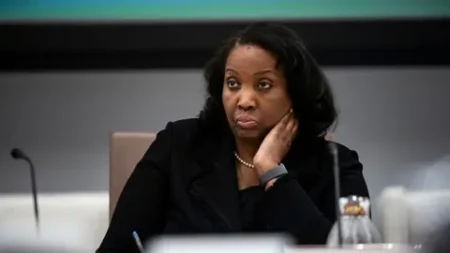**The Dynamics of Trade Negotiation in Modern Times**
Trade negotiations have recently gained prominence in global discussions, particularly with the approach President Donald Trump has adopted towards foreign nations, often labeled as aggressive and combative. The current political climate has created an environment where trade deals—a crucial aspect of international relations—are perceived through a lens of heightened tension and defensive stances.
As negotiations unfold, numerous challenges emerge. Prominent former Canadian trade negotiator Jason Langrish highlights that the tenor in negotiation rooms has significantly shifted. Once characterized by positive exchanges and collaborative upgrades, the process is now marred with accusations and defensive posturing. Langrish points to ongoing talks between Canada and the US, emphasizing that Canada is engaging with a sense of obligation rather than mutual interest due to the pressures exerted by US tariffs. The evolving dynamics reflect a broader trend where nationalistic sentiments have seeped into the foundational fabric of international trade discussions.
The role of the chief negotiator is vital in such dealings. Each negotiating party appoints a principal negotiator and assembles a specialized team to address distinct aspects such as tariffs, regulations, and procurement processes. This structure allows for a focused dialogue but also underscores the complexities and time-consuming nature of reaching consensus. In many cases, the negotiations extend over multiple years, requiring stamina and patience from all parties involved.
Karl Falkenberg, a seasoned European Union negotiator, echoes similar sentiments about the recent combative nature of negotiations under Trump’s tenure. He notes that Trump’s approach often defies established norms and principles that previously guided trade discussions. The claim by Trump to initiate numerous agreements within an implausibly short timeframe—90 deals in 90 days—has proven impractical and demonstrates the disconnect between ambition and operational reality.
On the ground, negotiations are typically grueling affairs involving rigorous sessions and sometimes marathon discussions, with negotiators investing countless hours to broker deals. The quiet, persistent work that happens behind closed doors is often overshadowed by public outbursts and dramatic political discourses, leading to misperceptions about how trade negotiations are genuinely conducted. A successful negotiator must cultivate trust, overcoming the inherent barriers presented by the competing national interests at play.
Wendy Cutler, a veteran negotiator from the US Trade Representative’s Office, emphasizes trust as a cornerstone of successful negotiations. The necessity to share potential proposals informally, without fear of leaks, is crucial for maneuvering through complex negotiations. However, external factors—such as public sentiment, political opposition, or specific industry backlash—inevitably influence outcomes and can slow the process considerably.
This balancing act becomes even heavier when confronted with domestic pressures. For instance, potential sectors adversely affected by proposed trade agreements can mobilize significant political resistance. Adjusting strategy to accommodate these voices becomes crucial; the dynamic of external opinion is a persistent force shaping the negotiation landscape.
As trade lawyers become a hot commodity in response to fluctuating tariffs and regulatory changes, the demand for legal expertise rises amidst the chaos of evolving trade policy. Whether through tariffs or trade agreements, companies find themselves navigating a complex web of obligations, further complicating the already intricate process of negotiation.
In conclusion, the world of trade negotiations today is characterized by significant upheaval and uncertainty. The impact of political influencers like Trump on traditional practices complicates the once straightforward process. Building trust, addressing national interests, and balancing public sentiment remain essential in this transformed landscape, illustrating that the art of negotiation demands both strategic foresight and a keen sensitivity to broader socio-political dynamics. As trade lawyers and negotiators adapt to this evolving terrain, the question remains: how will future agreements reshape the very nature of global commerce?












